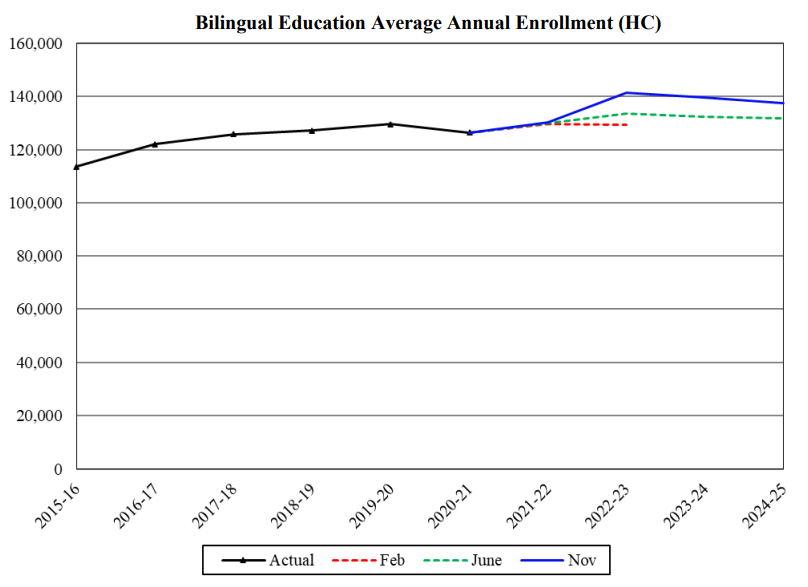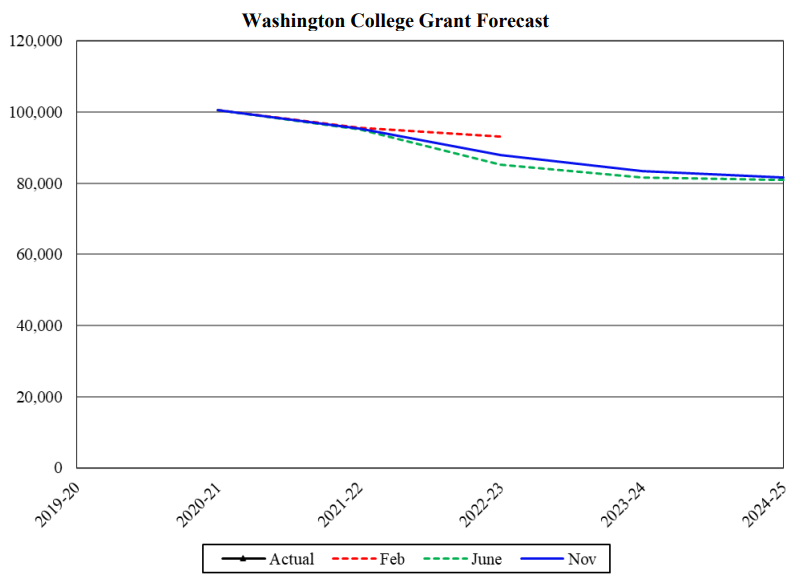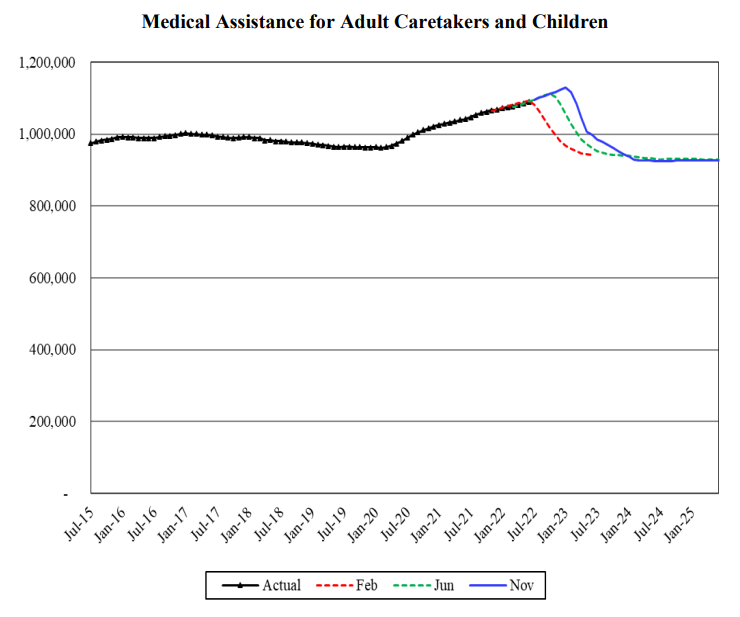2:17 pm
November 14, 2022
The Caseload Forecast Council (CFC) adopted a new caseload forecast last week. This forecast will help inform the maintenance level (the cost of continuing current services, adjusted for inflation and enrollment) for the governor’s budget proposal.
According to a preliminary cost estimate from the Office of Financial Management, the forecast is estimated to increase general fund–state (GFS) spending by $103 million in 2021–23 and $602 million in 2023–25, compared to the February 2022 caseload forecast (which was used in the 2022 supplemental budget).
The CFC expects enrollment in public schools to be flat through school year 2024–25 (the end of the forecast period). Enrollment in SY 2024–25 is still estimated to be below SY 2016–17 enrollment. There was a bump in enrollment in SY 2016–17 due to the implementation of full-day kindergarten, but the pandemic wiped that increase out. From SY 2021-22 on, enrollment seems to nearly revert to the pre-SY 2016–17 trajectory.

Meanwhile, enrollment in the transitional bilingual instructional program (TBIP) is projected to increase. SY 2022–23 enrollment is expected to be 9.1% above SY 2019–20. According to the forecast,
Much of the growth is explained by fewer students demonstrating proficiency on the spring exam, a requirement for program exit. Student performance was impacted by both pandemic learning loss and implementation of a new proficiency exam. . . . Also in 2022-23, the caseload increased by an estimated 3,000 Ukrainian refugee children.
(The remaining charts in this post are from the forecast document.)

In higher education, enrollment in the college bound scholarship program and Washington college grant are expected to decline. Both the pandemic disruptions and the subsequent improved labor market reduced demand for higher education.


Finally, the CFC estimates that Medicaid caseloads will increase through Jan. 2023, then drop. The June 2022 caseload forecast had assumed that the federal public health emergency (PHE) would end in Oct. 2022. The PHE is still in place, so the November forecast assumes that the PHE will end Jan. 11, 2023. During the PHE, the state receives an enhanced federal match for Medicaid, but it cannot remove people from the program. So, when the PHE is over, the forecast anticipates “large caseload drops in the following months when [the Health Care Authority] starts to re-determine the postponed cases according to federal requirements.”

Tags: 2023-25
